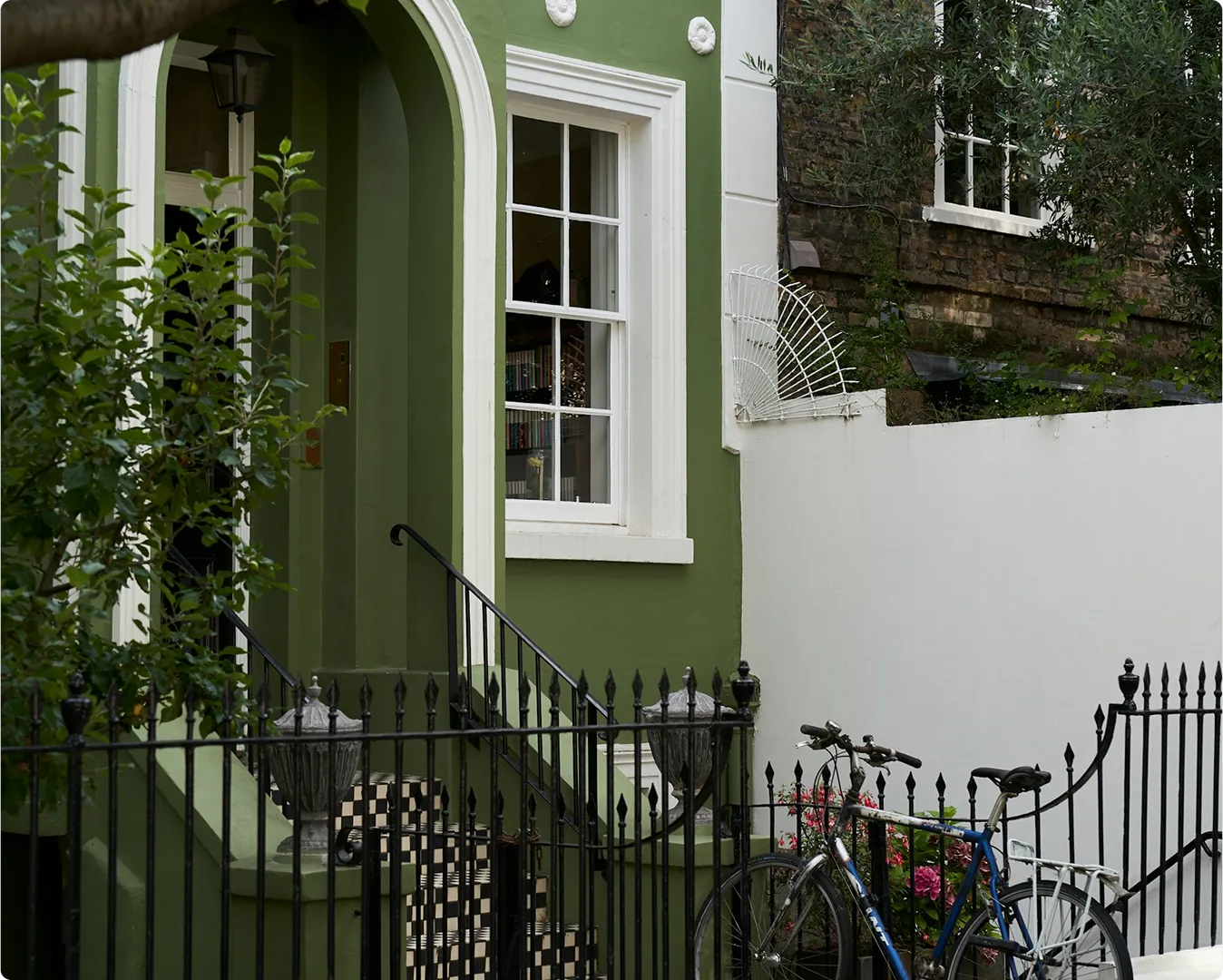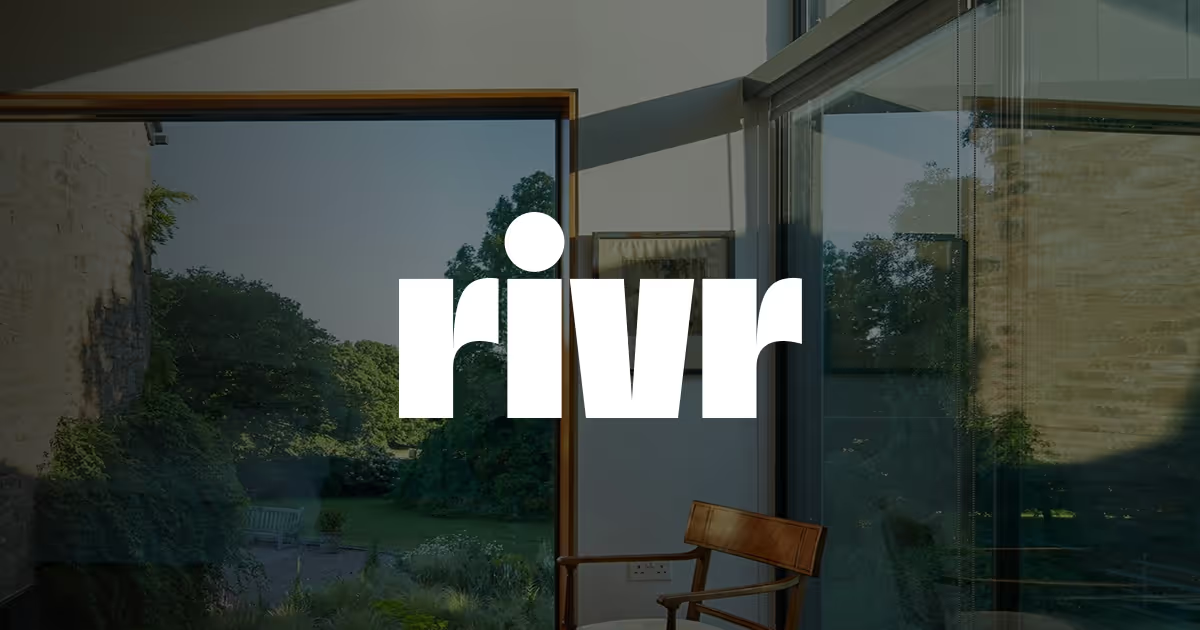.avif)
How Much Would It Cost To Rebuild My House?
Your rebuild cost is the full price to demolish, clear the site, and reinstate the home like for like. It excludes market value and land, and must reflect today’s standards and fees. Start with BCIS for a ballpark, commission a RICS surveyor for complex or listed homes.
What is rebuild cost?
The reinstatement sum for the existing structure only, not the land or market value. It covers site clearance, labour and materials, professional fees, compliance upgrades, and eligible external works. If the sum insured is low, an average clause can reduce a claim, so keep the figure current and evidence based.
With rivr home insurance, buildings cover is arranged on a full rebuilding basis, so the figure should reflect a like for like reinstatement of the existing structure, plus debris removal, compliance with current regulations, and eligible external works.
Need a quick estimate?
For buildings insurance, start with the BCIS Rebuild Cost Calculator to set a sensible rebuild cost. If your property’s non-standard or listed, arrange a RICS Reinstatement Cost Assessment.
The difference between rebuild cost and market value
A rebuild figure answers one question only: what would it cost to demolish and reconstruct your home if it was destroyed beyond repair? It includes labour and materials, and is generally lower than market value, which reflects land, amenities, schools and demand in your location.
The Association of British Insurers (ABI) explains that basing cover on the rebuild cost helps avoid over-insuring and paying higher premiums for insurance you do not need.
What’s actually included in rebuild cost?
Your home's rebuild cost should allow for everything required to put the buildings back as they were, complying with today’s rules. In practice this means demolition and site clearance, labour and materials, professional fees for architects and engineers, statutory fees and planning compliance, service reconnections.
It also includes external works such as boundary walls, drives, paths and even swimming pools, depending on your policy. Several specialist sources also flag VAT treatment, which can apply depending on circumstances.
British insurers often class buildings to include outbuildings, boundary walls, paths, drives, hard courts, permanently fitted hot tubs and swimming pools, and underground services, but scope varies by policy, so include these in your calculation only if they’re covered on your schedule.
Use BCIS calculators (free)
For standard houses, the rebuild cost calculator from the RICS Building Cost Information Service is the starting point for insurance purposes.
There are two public portals:
- The BCIS Public Cost Calculator.
- The ABI-hosted BCIS portal for consumers.
Both ask for basics like construction materials, age, type and external floor area, and provide an approximate rebuild cost benchmark. The tool is free with registration and is intended for personal use. BCIS also explains how to measure your square metre area externally across all storeys.
When to hire a RICS chartered surveyor
Use a chartered surveyor if the home is listed, built with non standard materials (for example thatch or timber frame), has unusual features or a basement, or has been significantly extended.
A RICS Reinstatement Cost Assessment(RCA) is an on site survey that sets the rebuild figure and must account for access, design complexity and temporary works, not a generic per square metre rate. For high value or non standard homes, a site specific RCA is the right basis for the sum insured.
What's the average rebuild cost in the UK?
The figures below are not quotes. They are broad UK benchmarks to help decide if your home's rebuild cost looks sensible before you contact your insurer. Use them to sanity check your BCIS or chartered surveyor result.
Average price of rebuild by bedrooms
Reviewed 9 October 2025
Average rebuild cost by UK region
Reviewed 9 October 2025
*Indicative 2025 averages by UK region(method: Confused.com Oct 2022–Sep 2023 data uplifted by BCIS +3.8%)
What drives the rebuild cost?
Materials, labour and professional fees
Rebuild cost covers everything required to reconstruct the property, not the market value. Materials and labour move with supply conditions and local demand, and professional fees for architects, engineers and project management add a meaningful percentage. Set the figure to reflect your current specification and include these fees from the outset.
Access, scaffolding and protection
Site logistics change the cost. Narrow lanes, cul de sacs, shared or party walls and tight plots can require extra scaffolding, protection and temporary works. A reliable assessment allows for these constraints rather than relying on a generic per square metre rate that ignores the realities of the site.
Inflation, lead times and index linking
Many policies apply index linking so the sum insured tracks sector rebuild indices at renew, not general CPI. Index linking adjusts the sum insured before a claim, which helps keep pace with materials and labour trends. It does not correct an out of date base figure, so review the number after renovations and at sensible intervals.
When does my home need special handling?

Flats and leasehold blocks
In most blocks, the freeholder or management company sets the buildings insurance sum insured for the whole building. Underinsurance is usually assessed at block level, but leaseholders should still keep clear records of improvements and betterments within their demise. Check your lease and your schedule to confirm what is covered.
Listed, period and non standard construction
Listed status, heritage techniques or non standard materials often require specialist trades and longer lead times. A chartered surveyor’s Reinstatement Cost Assessment is the appropriate basis for the sum insured in these cases, because it reflects site access, specification and temporary works rather than a generic calculator output.
For listed homes, rivr arranges cover for Grade II and Grade II* properties, and considers Grade I case by case (subject to underwriting). We use a current RICS reinstatement cost assessment to set the sum insured.
High value homes
Large or architect designed properties often carry bespoke finishes, complex services and tighter access, which can move the rebuild figure significantly.
rivr specialises in home insurance for high value properties. We base buildings cover on a current RICS reinstatement cost assessment and index link the sum insured to sector movements. We also review material upgrades at completion and consider specialist features at underwriting, so the figure tracks the home you actually own.
Outbuildings and external works
Garages, boundary walls, drives, paths, patios and pools are often treated as part of buildings for insurance purposes. Scope is policy dependent. Include these in your calculation if your schedule shows they are covered, and price them on a like for like reinstatement basis.
How often should you review?
Index linking helps track movement, but it is not a set and forget solution. We recommend reviewing the rebuild figure every three to five years, and whenever you complete renovations such as extensions, major kitchen or bathroom refits, roof replacement or window upgrades.
Record assumptions each time so future reviews are straightforward.
Underinsurance and the "average clause"
If the sum insured is too low, many policies apply the average clause. The mechanism is simple:
Payout = Claim × (Sum Insured ÷ True Rebuild).
So if the true rebuild is £600,000 and the sum insured is £450,000, a £100,000 claim may settle at £75,000. The same proportional reduction can apply to partial repair claims, not only total losses.
Worked example: Storm damage results in a £200,000 repair. The sum insured is £500,000, but the accurate rebuild cost is £1,000,000. Applying average, the payout is £200,000 × (500,000 ÷ 1,000,000) = £100,000, with the policyholder paying the difference.
Common mistakes to avoid
- Using market value or a mortgage valuation as the sum insured.
- Leaving out demolition, professional fees or external works.
- Not updating after renovations or layout changes.
- Assuming VAT is never relevant to the works.
- Relying on outdated per square metre rates without site specific allowances.
Steps to set your sum insured
rivr: digital-first cover for high value homes

rivr is a digital first home insurance specialist for high value primary residences. If you want confidence in your rebuild figure, we can review your BCIS inputs, arrange a RICS reinstatement cost assessment where needed, and set the buildings sum insured on a full rebuilding basis.
Prefer everything on one schedule? We offer a combined home insurance policy with separate sums insured for buildings and contents.
Reach out to our team and protect what matters most.
Read more
Frequently asked questions
Start with the BCIS rebuild cost calculator, and carefully calculate your external floor area. If the property is large, has special features, or uses non standard materials, hire a chartered surveyor for a tailored report. Use your mortgage valuation only as a cross check, not as your sum insured.
No. Home insurance relies on rebuild cost, not sale price. ABI clarifies that using market price risks over insuring and higher premiums, while a low rebuild risks a reduced claim.
People sometimes use very rough per m² benchmarks. Recent guides quote around £1,750 to £3,000 per m² for higher-spec projects, with broader commentary at £1,200 to £2,500. Treat these only as coarse checks and set your figure via BCIS or a chartered surveyor.
Usually yes if your policy classifies them as buildings. rivr’s building insurance includes garages, outbuildings, paths, drives, boundary walls and permanently fitted swimming pools, so your sum insured should reflect them. Check your schedule to confirm what is covered for your property.
Use BCIS for a ballpark estimate, but hire a chartered surveyor for a reinstatement cost assessment. Heritage techniques and materials can multiply cost and lead times, so a bespoke assessment is safer for insurance decisions.
rivr insures listed properties, including Grade II and Grade II*, subject to underwriting. Grade I is considered case by case. We set the buildings sum insured from a current RICS reinstatement cost assessment, and the policy’s survey uplift does not apply to Grade I listed buildings.
Yes. Contents insurance covers your belongings, not the structure, so set a separate figure alongside your buildings cover. Premiums and limits differ between the two. With rivr, buildings and contents sit in separate sections, each with its own sum insured and limits.
Most policies apply average, reducing the payout in proportion to underinsurance. Large insurers explain the mechanism and provide examples, so build in a buffer and keep your sum insured current at each renew to avoid a shortfall.
Yes, where VAT would be payable and not recoverable. rivr recommends setting your sum insured to include VAT on eligible works, alongside demolition and professional fees, and confirming the VAT position in a current RICS reinstatement cost assessment.



.jpg)


